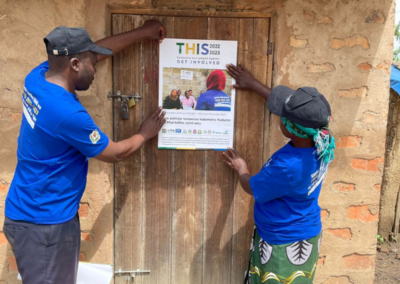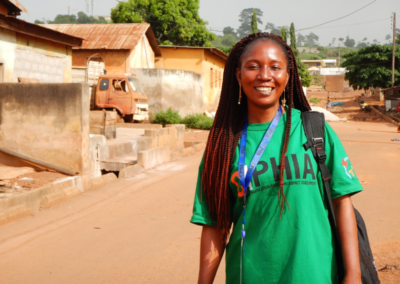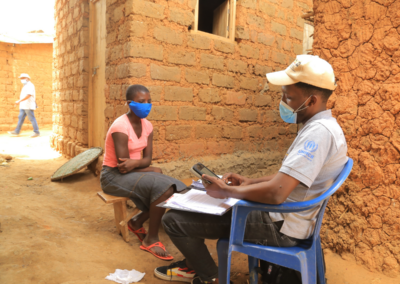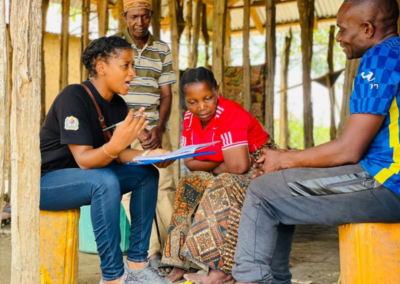The Uganda Population-based HIV Impact Assessment (UPHIA 2020-2021) survey has documented significant progress in the fight to end the HIV epidemic. With the global commitment to reach all UNAIDS 95-95-95 targets by 2025 at the forefront, this critical survey demonstrates that Uganda has already exceeded the second 95 target well in advance of 2025.
UPHIA 2020-2021 was led by the Government of Uganda through the Ministry of Health (MOH) with support from the U.S. President’s Emergency Plan for AIDS Relief (PEPFAR) and technical assistance and partnership with the U.S. Centers for Disease Control and Prevention (CDC). UPHIA 2020-2021 was implemented by ICAP at Columbia University and the MOH in collaboration with other Government of Uganda entities, including the Uganda Virus Research Institute (UVRI) and the Uganda Bureau of Statistics (UBOS) as well as regional referral hospitals and local government authorities.
With fieldwork conducted from February 2020 to March 2021, UPHIA 2020-2021 measured the impact of Uganda’s national HIV response, collecting information about uptake of HIV care and treatment services and measuring national HIV incidence, prevalence, and viral load suppression. Survey participants were offered HIV counseling and testing with return of results.
The survey, the results of which were released in August 2022, shows that among adults living with HIV who were aware of their status, 96.1 percent were on antiretroviral treatment (ART), meaning Uganda had met the second UNAIDS target calling for at least 95 percent of all people living with HIV to be on ART. The survey also demonstrated that Uganda is closely approaching the third UNAIDS 95 target – among people living with HIV who were on ART, 92.2 percent had viral load suppression, an important indicator of the success of a country’s HIV programs.
“These promising results show us that Uganda is on the pathway to continued improved health for people living with HIV,” said Joshua Musinguzi, head of the AIDS control program at the Uganda Ministry of Health. “As the country progresses toward the third UNAIDS 95 target, we must continue to focus not only on providing care, but also maintaining care for those living with HIV. It is incredibly valuable that we have these findings to help HIV programs in Uganda guide their next steps in this process.”
Progress toward the first UNAIDS 95 target has lagged, with awareness of HIV status among adults living with HIV at 80.9 percent, emphasizing the need to further refine HIV case-finding and testing strategies. The survey also showed that women bear the highest burden of HIV in Uganda and there are several regional differences pertaining to HIV prevalence and viral load suppression. For example, there was a significantly higher rate of viral load suppression in the southwestern part of the country than in the mid-eastern region of the country.
“It is vital that we use these survey findings to help us target interventions to meet the needs of the most vulnerable populations,” said Sam Biraro, country representative for ICAP in Uganda. “For example, we know interventions must consider HIV prevention services for women and girls and must consider how easily or not someone accesses HIV services where they live. We can do this through continued collaboration with all national stakeholders and community members, as well as through differentiated service delivery approaches that are tailored to meet the needs of men and women of different ages, lifestyles, and communities.”
These future goals appear to be in reach given the substantial progress in addressing the HIV epidemic in Uganda since the first population-based HIV impact survey, UPHIA 2016-2017, was conducted. UPHIA 2016-2017 demonstrated that among people living with HIV in Uganda, 72.5 percent were aware of their HIV status, that among people living with HIV who knew their HIV status, 90.4 percent were on ART, and that among people living with HIV on ART, 83.7 percent were virally suppressed.
“Uganda has shown a long history of continued improvement in creating pathways for communities to receive the HIV prevention, care, and treatment services they need,” added Veronicah Mugisha, UPHIA technical lead. “With sights especially set on increasing HIV status awareness, Uganda is well-positioned to reach all UNAIDS 95-95-95 targets by 2025. To reach the UNAIDS goal of ending the AIDS epidemic by 2030, we must continue to focus strategies on detecting new HIV infections through targeted testing and case finding, and timely provision of treatment and prevention services to interrupt further transmission.”
As data analysis for UPHIA 2020-2021 concludes, ICAP and collaborators recently completed data collection for another HIV survey in Uganda focused on refugee populations. The Refugee Population-based HIV Impact Assessment (RUPHIA 2021) survey sought to collect information on uptake of and access to HIV-related services among refugee populations, of which Uganda hosts more than any other African country. In addition to estimating HIV prevalence and viral load suppression, RUPHIA 2021 will estimate common health conditions, co-morbidities, and other health factors among refugee populations in Uganda.
About ICAP
A major global health organization that has been improving public health in countries around the world for nearly two decades, ICAP works to transform the health of populations through innovation, science, and global collaboration. Based at Columbia Mailman School of Public Health, ICAP has projects in nearly 40 countries, working side-by-side with ministries of health and local governmental, non-governmental, academic, and community partners to confront some of the world’s greatest health challenges. Through evidence-informed programs, meaningful research, tailored technical assistance, effective training and education programs, and rigorous surveillance to measure and evaluate the impact of public health interventions, ICAP aims to realize a global vision of healthy people, empowered communities, and thriving societies.










